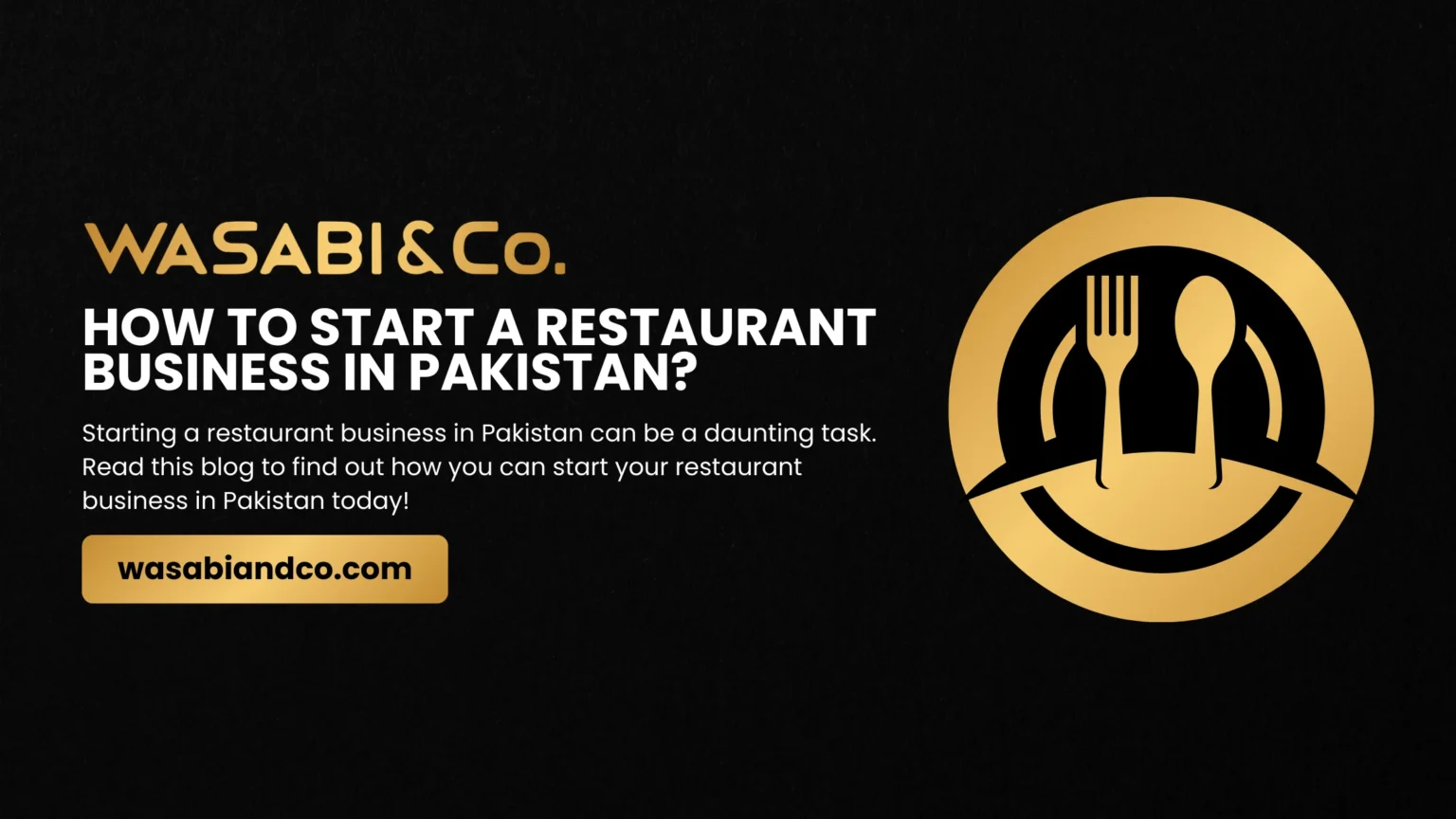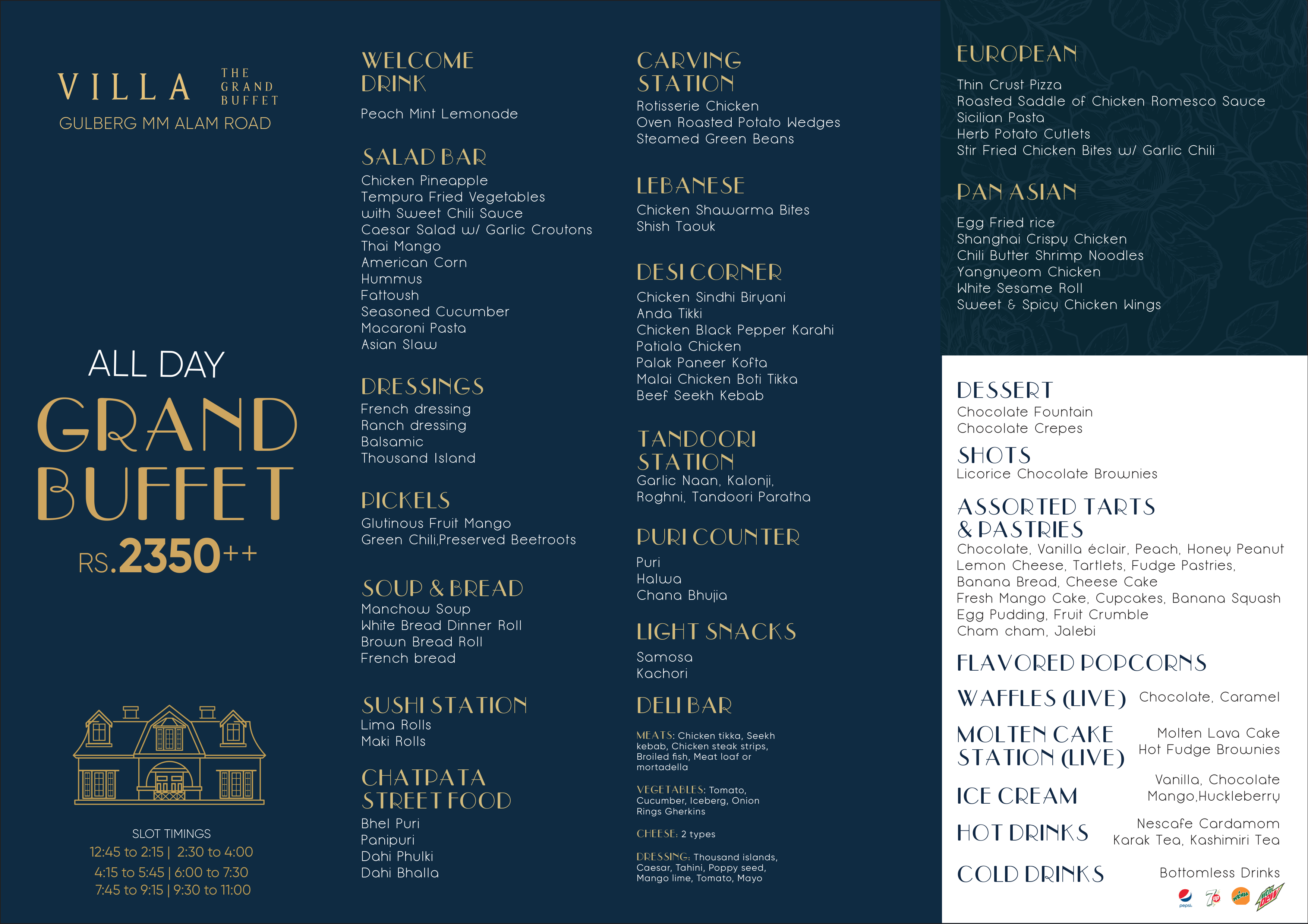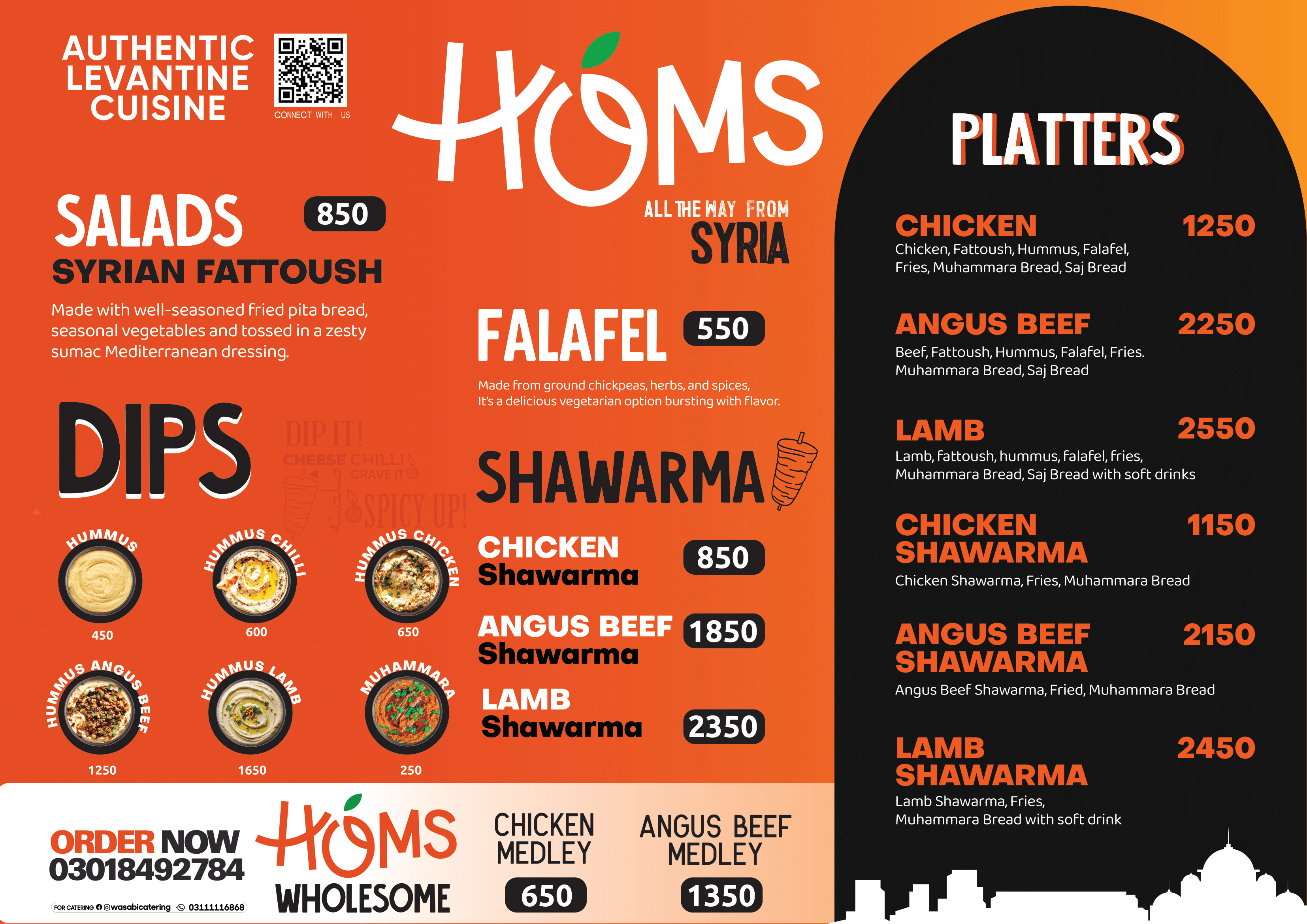how to start a restaurant business in pakistan?
August 23, 2024
Restaurant Consultation

It is not easy to open a restaurant business in Pakistan due to stiff competition and a dynamic market; the business venture needs a lot of planning and research. As the food industry is experiencing growth due to the increased population of youth and an increase in demand for various foods, there is a good market for more restaurants. In this guide, we shall be looking at some steps that will assist you in making this process a success.
1. Conducting Market Research
- Understand the Market: The Pakistani restaurant industry is vast, and customers are served various foods, including different cuisines. In preparation for this type of business, extensive market research is needed concerning the current trends, customer needs, and potential competition.
- Competitor Analysis: It is advisable to consider other successful competitors, and determine their reasons for success. This analysis will help identify certain variables, such as menu preference, pricing methods, and marketing strategies, that will be effective for the identified target market. You can contact Wasabi and Co. if you’re interested in restaurant training.
Knowing your target consumer is basic. Are your target customers young professionals, families, or health-conscious consumers? Understanding your audience can help develop the restaurant’s overall concept, menu, image, and advertising. For instance, the case of Wasabi and Co., which has grown to operate several restaurants in the Japanese cuisine market, can provide restaurant consultation how to design an eating establishment that would appeal to a particular set of consumers.
2. Developing a Comprehensive Business Plan
- Concept and Theme: Choose the idea and theme of your restaurant. Will it be fast food, mid-scale, or a premium restaurant? The site’s theme should complement the target audience, which will likely rush to it.
- Financial Projections: Prepare a detailed business financial plan with the costs needed to set up the business, costs that may be incurred during its operation, and anticipated earnings. This will be required when applying for investments or loans.
A business plan is a strategic guide with the key to your business success. Among these is a clear definition of your restaurant concept, target demographic, menu, and pricing plans. Some financial projections that need to be made include fixed and variable costs, essential capital investment, and expected gross and net revenues. Also, conducting a SWOT analysis to elucidate the strengths, weaknesses, opportunities, and threats that may affect your business could be helpful.
3. Choosing the Perfect Location:
- High Foot Traffic: Choose a place with traffic both day and night, with preference to areas where business is highly likely to be present, such as Lahore, Karachi, or Islamabad. It should be easily accessible and conspicuous to potential buyers.
- Consider Local Competition: Check that your chosen area is not overly competitive regarding restaurants similar to yours. For instance, consider how many similar restaurants are in the neighbourhood when creating a new restaurant.
The setting of your restaurant business greatly determines the chances of the company to succeed or fail. Choose the locations with high traffic and the presence of customers, mainly markets of Defense Housing Authority, Gulberg, or other business areas or shopping malls in big cities.
But do not forget about competitive advantage in these areas. Competing is always good, but opening a restaurant in an area flooded with top restaurants would probably not be the best idea because customers would not flock to the restaurant. Seek out the areas where your restaurant can address a void.
Get Restaurant Training From Wasabi and Co.
Wasabi and Co. provides restaurant training to future entrepreneurs who want to get into the restaurant business. We have trained many business owners to start successful restaurants throughout Pakistan. Contact us now to get started with our training.
4. Contending with Legalities & Permits:
- Business Registration: Obtain legal status for your restaurant with the respective government agencies to register new businesses. This is the primary step to setting up a Pakistan restaurant business for the following reasons.
- Health and Safety Certifications: Acquire all the health and safety licenses to ensure the restaurant fulfills all the operating course requirements. This includes food hygiene certification and other necessary certifications from the food authority..
It is pertinent that the legal realities of the particular area should be cleared, understood, and observed so that there may not be any legal issues in the future. The initial stage is to bring your business to the appropriate government’s notice, which entails acquiring a trading license and, most importantly, tax compliance.
Also, gain the health and safety certifications necessary for its legal requirements and to retain consumer trust. Before starting your business, it is wise to seek legal advice to help you complete all the legal requirements before opening your business.
5. Crafting a Unique Menu:


- Menu Development: When developing your website, ensure the menu includes dishes that fit your restaurant theme and customer base. Offer everyday dishes that people will readily buy and dishes that are different from other restaurants so that people will notice that they are visiting your restaurant.
- Supplier Relationships: Develop good working relationships with suppliers to guarantee high-quality raw materials. Perishable elements are crucial, primarily if you retail niche foods similar to Japanese foods.
Your menu is the essence of your eating place, which you should pay attention to. It should be related to the restaurant concept, and some should be made with your target group in mind.
It is recommended to have those products on the menu that are favourites among the guests and, at the same time, have some point that sets the restaurant apart from other similar businesses.
6. Hiring & Training Staff:
- Hiring Skilled Staff: Ensure you hire well-experienced chefs, servers, and managers conversant with your restaurant’s theme.
- Training Programs: Invest in training your staff so that you can be assured that they are offering the best customer service and the highest standards of food and cleanliness.
The quality of human resources is one of the pillars that can make or break a restaurant business. Ensure that you get employees who are well conversant with your restaurant’s food and consistent with the food preparation.
Customer services training should be given to all front-of-house employees to provide a satisfying way of eating to the clients you are serving. Continued training is also essential to ensure your personnel are updated on food hygiene, customer care sense, and menu knowledge to align with your company image.
7. Designing an Inviting Ambiance:
- Interior Design: Choose a theme your restaurant embodies and decorates to make your guests comfortable. Some of these are lighting, chairs and tables for seating, and décor.
- Comfort and Accessibility: Ensure that customers who are disabled are also comfortable when they visit your restaurant. Again, providing spaces for seating and rest for users is essential.
The atmosphere created or perceived in your restaurant goes hand in hand with the whole experience offered to the guests. The aim of interior design should blend with the particular theme of your restaurant, whether it is elegant like Wasabi’s Japanese restaurant or bright and noisy like a traditional Pakistani restaurant.
These include matters relating to the furnishing of the area, the lighting system to be used, and the room’s interior design. The idea is to turn your restaurant into an establishment where customers wish to frequent, spend their time, and feel like they are dining well.
8. Marketing & Promotion Strategies:



- Digital Marketing: Advertise your restaurant on social media accounts like Instagram or Facebook. Choose posting frequencies, formats, channels, type of content, and posting time, and use the channels to share high-quality pictures of your food, your restaurant’s stories, and your customers’ words.
- Collaborations: Construct a list of local food bloggers and influencers and collaborate with them. This can significantly increase the restaurant’s awareness among social media users.
Marketing is a crucial element in the restaurant business and, indeed, in the success of your restaurant, especially given the cutthroat nature of the restaurant business in Pakistan. It cannot be overemphasized that students need to build an active social media presence. For instance, Instagram and Facebook are perfect for presenting interiors, dishes, and restaurant promotions.
9. Managing Finances Effectively:
- Budgeting and Forecasting: Prepare a comprehensive and realistic budget plan containing all the expenses for buying assets in the initial stage, operations expenses, and required revenues. You must perform a performance check often to ensure profitable financial results.
- Cost Control: They must introduce expense control measures to control expenses. These consist of tracking the costs of items of consumption such as food, the costs of people and employees, and other incidental expenses.
Financial aspects play a vital role in a restaurant’s survival or any other business venture in the long run. A good starting point is to make a detailed budget that lists all costs incurred, including rent, utility bills, employees’ wages, and stock. To financially manage your business, learn the expenses and revenues you spend and earn, and cross-check if you are on the right track.
Extra strategies to cut down costs, e.g., controlling the price of food and unnecessary losses, can increase your revenues. Further, it is possible to automate all the financial processes and use special software to track all the financial operations and make reports of the restaurant’s financial standing.
10. Integrating Technology:
- Point of Sale (POS) Systems: Another solution is to integrate and institute a good Point of Sale (POS) that will help to monitor orders and sales information.
- Online Ordering and Reservations: Make it easy to access orders and reservations online to dine at your restaurant.
Technologization of restaurants’ operations is inevitable in the modern world and is crucial for a restaurant’s effective and successful function. A sound POS system lets you control order delivery, monitor a sale, and, most importantly, determine customer trends.
Further, the availability of online orders and reservation services improves the client’s experience and satisfaction. By embracing technology, you can do away with many problems, and all your energy is directed to developing good services to render quality dishes.
11. Ensuring Quality Control:
- Consistent Food Quality: Incorporate measures to ensure that all food you serve at your restaurant meets the required quality. Make it a habit to update the list and method of the food and the way it is prepared.
- Customer Feedback: Promote complaints to identify the service’s weaknesses. This feedback should be used to change some aspects and improve the meal service.
In a service organization, the target is that the company must ensure quality services to its clients to allow it to establish a base of long-term customers. Adopt a rigorous quality assurance and control policy in the kitchen for meals of the best quality. It is a good idea to change the recipes, methods of preparation, and presentation of your foodstuffs now and then to make your menu enjoyable.
Also, keep asking for feedback regarding customers’ experience with dining on your business premises. Engage such feedback to consider those areas that require changes to improve a particular Learning Unit and the learning experience.
12. Adaptability & Growth:
- Stay Updated on Trends: Truthfully, the youth consume foods that are new to the market, and it is essential to ensure they are included in the menu. Having special or promotional meals can lure new customers to the business.
- Expansion Opportunities: When you are finally in business and like the new restaurant, I am telling you that you can open new branches or even franchises. This can be useful in growing your brand and, hence, making your brand popular and easily recognizable.
Conclusion
In a service organization, the target is that the company must ensure quality services to its clients to allow it to establish a base of long-term customers. Adopt a rigorous quality assurance and control policy in the kitchen for meals of the best quality. It is a good idea to change the recipes, methods of preparation, and presentation of your foodstuffs now and then to make your menu enjoyable.
Also, keep asking for feedback regarding customers’ experience with dining on your business premises. Engage such feedback to consider those areas that require changes to improve a particular Learning Unit and the learning experience.





